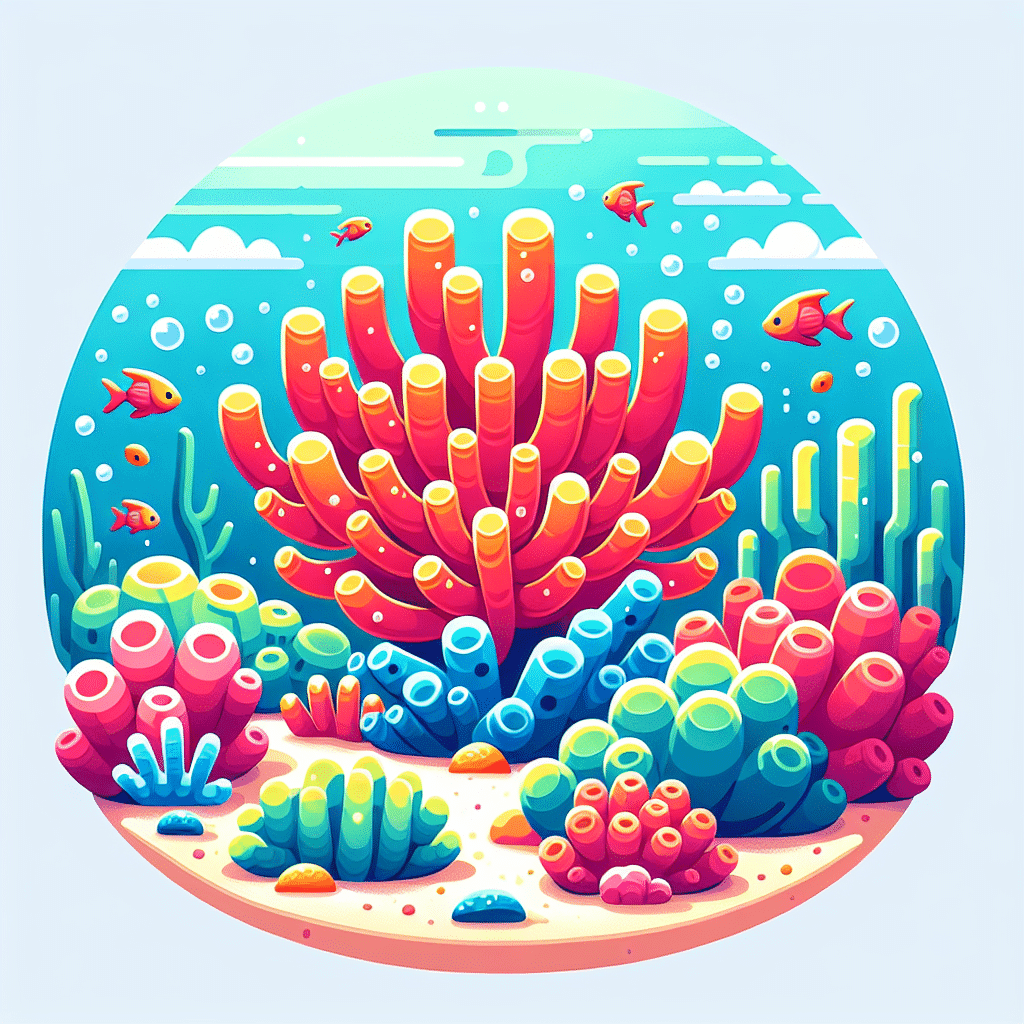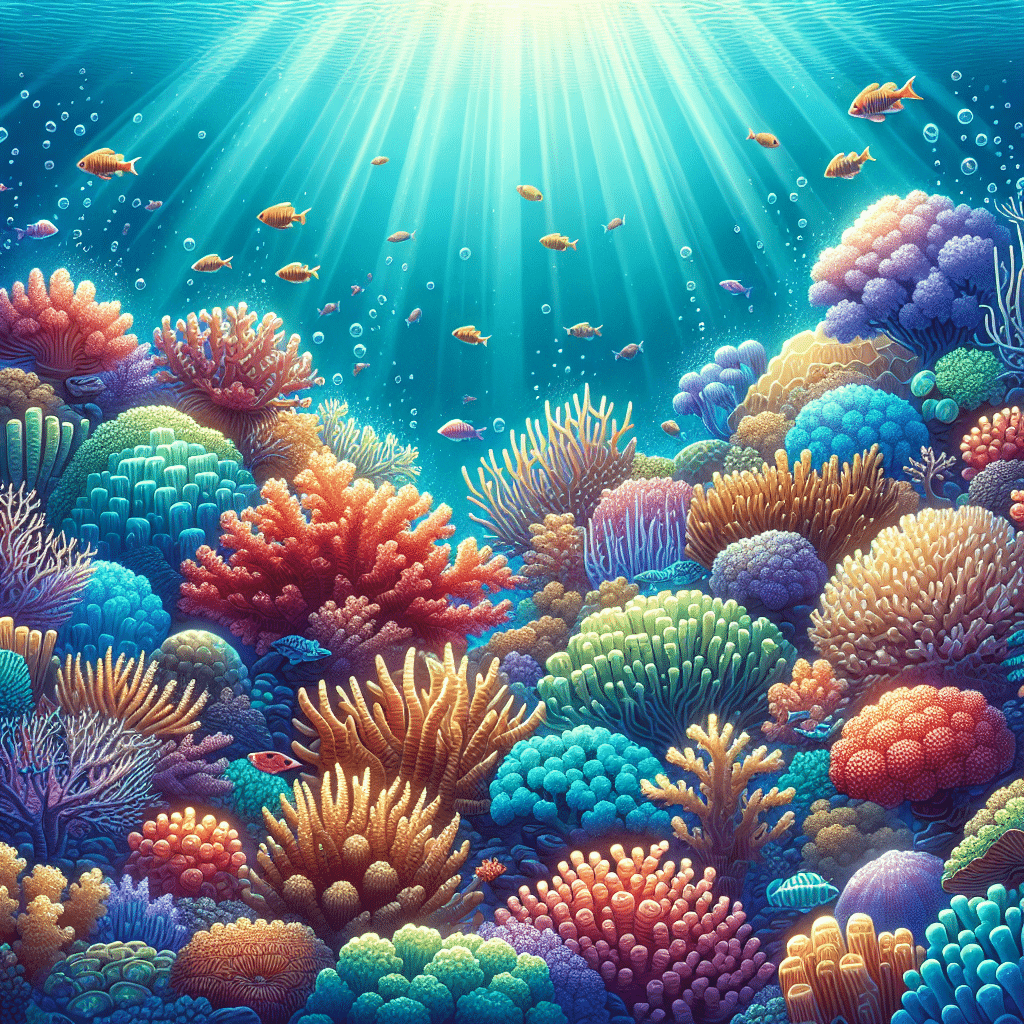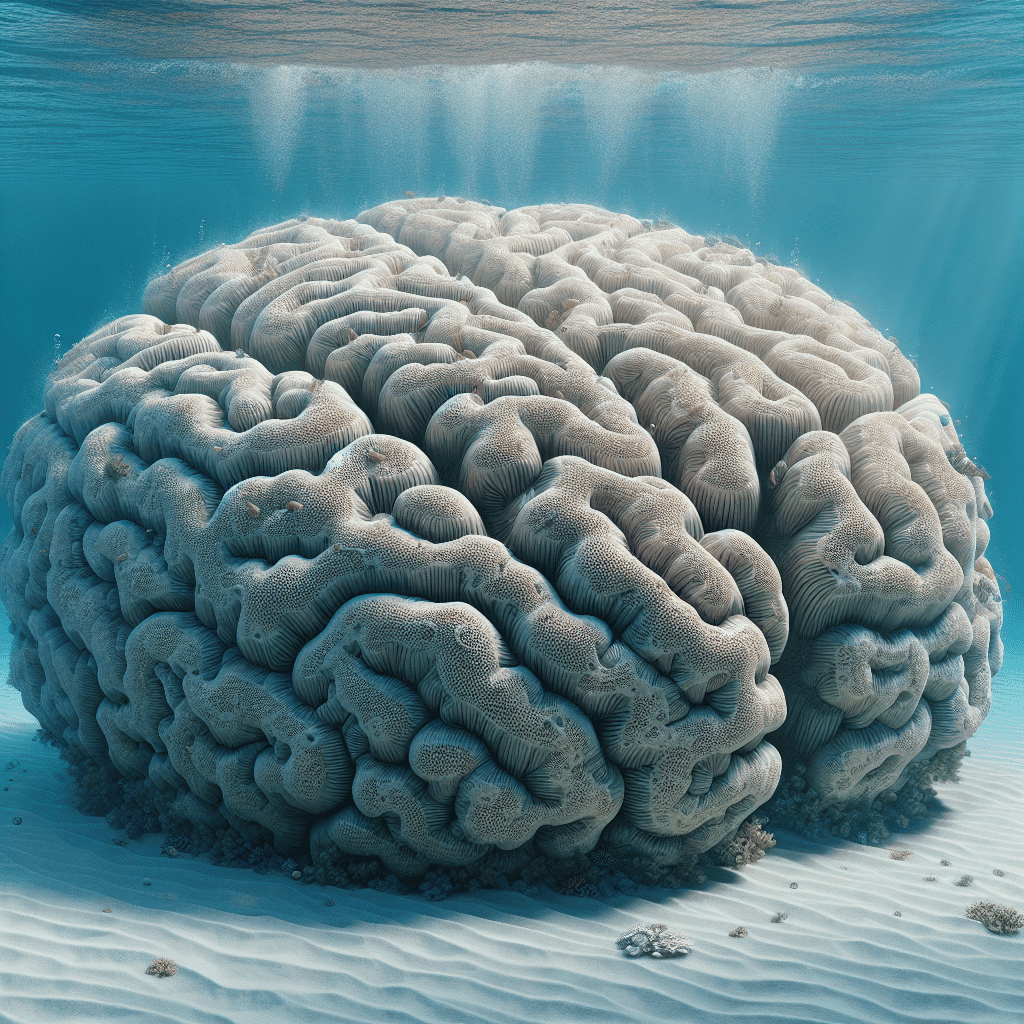Understanding Torch Corals
Introduction to Torch Corals
Torch corals are fascinating creatures that belong to the Euphyllia genus, which includes other popular corals like Hammer corals and Frogspawn corals. I love having torch corals in my reef tank due to their mesmerizing swaying tentacles and vibrant colors. These corals are commonly found in the tropical waters of the Pacific, particularly in regions such as Fiji, Tonga, the Solomon Islands, and the Great Barrier Reef (Tidal Gardens).
Torch corals are classified as Large Polyp Stony (LPS) corals, and they are known for their beauty and ease of care, making them a favorite among hobbyists. With a little attention to their needs, they can thrive and add a striking visual element to any aquarium.
Characteristics of Torch Corals
One of the most distinctive features of torch corals is their long, flowing tentacles that resemble a torch, hence their name. These tentacles can come in a variety of vibrant colors, including green, pink, red, and yellow, which can really bring life to an aquarium setup (Extreme Corals).
Here are some key characteristics of torch corals:
| Characteristic | Description |
|---|---|
| Genus | Euphyllia |
| Family | Euphylliidae |
| Natural Habitat | Tropical waters of the Pacific |
| Common Colors | Green, pink, red, yellow |
| Reproductive Method | Asexual reproduction through budding |
Torch corals thrive in stable water conditions with moderate to high lighting levels, making them suitable for many reef tank setups. They also exhibit a unique ability to reproduce asexually through processes like intratentacular budding, where a single polyp can elongate to form two near-identical polyps.
Incorporating torch corals into my tank has been a rewarding experience, and I find their vibrant presence enhances the overall beauty of my underwater environment. If you’re interested in learning about other corals, check out articles on brain coral, mushroom coral, and hammer coral.
Care Requirements for Torch Corals
Caring for torch corals involves understanding their specific needs regarding lighting, water flow, and water quality. Here’s what I’ve learned about keeping these beautiful corals healthy in my reef tank.
Lighting Needs
Torch corals thrive under moderate to high intensity indirect lighting. I recommend using actinic lighting or high output fluorescent lighting, such as VHO (Very High Output) and Power Compact lights. The coloration of my torch corals has been influenced by the intensity of light they receive. It’s important to give them some time to adjust to stronger lighting, like Metal Halide, so I slowly introduce them to these conditions (TheSea.Org).
| Light Type | Intensity | Notes |
|---|---|---|
| Actinic Lighting | Moderate to High | Enhances colors |
| VHO Lighting | Moderate to High | Good for overall growth |
| Metal Halide | High | Gradual introduction recommended |
| LED Lighting | Moderate to High | Provides right spectrum |
Water Flow Recommendations
For torch corals, I find that an indirect and moderate water current works best. Strong, direct water flow can hinder their ability to spread and fully open their polyps. If I notice that the polyps are not fully extending, it often signals a problem with water quality. Keeping the water clean and free of infectious organisms is essential for their health.
| Water Flow Type | Recommendation |
|---|---|
| Indirect | Best for growth |
| Moderate Current | Ideal for health |
| Strong Direct | Not recommended |
Water Quality Considerations
Maintaining good water quality is crucial for the health of torch corals. I ensure my aquarium water is clean and stable, with parameters checked regularly. This includes monitoring levels of ammonia, nitrites, nitrates, and phosphates, as these can impact coral health significantly. A consistent water quality helps prevent issues like bleaching and tissue recession.
| Water Parameter | Ideal Range |
|---|---|
| Ammonia | 0 ppm |
| Nitrites | 0 ppm |
| Nitrates | < 5 ppm |
| Phosphates | < 0.03 ppm |
By paying attention to these care requirements, I can keep my torch corals thriving in my reef tank. For more information on different types of corals, check out other articles about corals and specific species like brain coral or hammer coral.
Feeding Torch Corals
Feeding torch corals is an important part of keeping them healthy and thriving in my reef tank. While these corals get a lot of their nutrients from the symbiotic algae called zooxanthellae, they also benefit significantly from direct feeding. Here’s how I approach feeding my torch corals.
Feeding Frequency
I typically feed my torch corals 2-3 times a week in the evening. This is when their tentacles are fully extended and ready to absorb any food I provide. It’s crucial to avoid overfeeding, as this can lead to water quality issues in my aquarium.
| Frequency | Optimal Time |
|---|---|
| 2-3 times a week | Evening |
Recommended Foods
When it comes to food, I find that torch corals respond well to smaller meaty foods. Here are some of my go-to options:
- Mysis Shrimp: A favorite among many coral keepers, providing excellent nutrition.
- Brine Shrimp: Another great option that is easy to find and feed.
- Frozen Meaty Bits: I use raw shrimp, Silver Side, or even fish and squid.
- Specially Designed Coral Foods: I also incorporate products like Sustainable Aquatics Hatchery Diet, which has shown good results for torch corals.
| Food Type | Nutritional Benefit |
|---|---|
| Mysis Shrimp | High in protein |
| Brine Shrimp | Easy to digest |
| Frozen Meaty Bits | Variety of nutrients |
| Sustainable Aquatics Hatchery Diet | Formulated for corals |
Feeding Techniques
When feeding my torch corals, I like to use a few techniques to ensure they get the most out of their meals:
Target Feeding: I use a turkey baster or feeding syringe to squirt food directly onto the tentacles of the corals. This helps ensure they grab the food before it drifts away.
Broadcast Feeding: While torch corals can catch food from the water column, I prefer to do this sparingly. It’s best to focus on targeted feeding for maximum absorption.
Observe Their Response: I always pay attention to how my corals respond during feeding time. If they seem to be expanding their tentacles and catching food, I know I’m doing it right.
By following these tips and being mindful of their feeding habits, I ensure my torch corals remain healthy and vibrant. If you’re interested in other coral types, check out my articles on brain coral, duncan coral, and frogspawn coral for more insights!
Reproduction of Torch Corals
Torch corals are fascinating creatures, and their reproduction methods are just as interesting. They have a unique ability to reproduce through two primary processes: splitting and budding, as well as a form of asexual reproduction.
Splitting and Budding
One of the most remarkable aspects of torch corals is their ability to split and reproduce via budding. These branching LPS (large stony polyp) corals are quick to split and can easily be fragged, growing multiple heads through this process. Torch corals can start splitting whenever they feel ready in an aquarium, unlike in the wild where this occurs during a full moon over two consecutive months.
In my experience, torch corals are likely to split within the first six months after being introduced to a tank. It’s fascinating to watch them grow and multiply. To thrive during the splitting process, stable calcium and alkalinity levels are essential. Fluctuations in these levels can stress the corals, potentially hindering their growth and ability to split.
If a torch coral isn’t splitting, it could indicate an issue in the aquarium environment. Sometimes, fragging the coral can help it multiply successfully. A single coral frag can be expected to grow into a multi-head colony within about 12 months under controlled water conditions.
Asexual Reproduction
Asexual reproduction in torch corals mainly occurs through the budding process. During this method, small polyps develop from the main body of the coral and eventually detach to establish themselves as independent corals. This method allows for rapid population growth in a healthy reef tank environment.
In summary, the ability of torch corals to reproduce through splitting and budding makes them an enjoyable addition to any reef tank. Their resilience and adaptability in various conditions can lead to a thriving and visually stunning aquatic ecosystem. If you’re interested in learning more about different types of corals, be sure to check out our articles on brain coral, mushroom coral, and hammer coral for further exploration.
Common Health Issues
Torch corals, like many other coral species, can face a range of health issues that can affect their vitality and appearance. It’s essential for me as a hobbyist to be aware of these problems to maintain a healthy reef tank.
Bleaching
Coral bleaching is a significant concern for torch corals. This phenomenon occurs when rising sea temperatures, often due to global warming, cause corals to expel their symbiotic algae, known as zooxanthellae. Without these algae, which provide essential nutrients through photosynthesis, the corals lose their color and turn white.
Maintaining stable water temperatures and avoiding stressors in the tank environment can help prevent bleaching. Regular monitoring of temperature and ensuring the tank conditions mimic natural habitats is crucial for the health of my torch corals.
Tissue Recession
Tissue recession is another issue that can plague torch corals. This occurs when the coral’s tissue begins to recede from its skeleton, often due to poor water quality, especially elevated levels of nitrate and phosphate.
To combat this, I need to keep a close eye on water parameters and maintain consistent levels of calcium, alkalinity, and magnesium. Regular water testing is vital in detecting any fluctuations that might lead to tissue recession.
| Parameter | Ideal Range |
|---|---|
| Calcium | 400 – 450 mg/L |
| Alkalinity | 8 – 12 dKH |
| Magnesium | 1250 – 1350 mg/L |
Brown Jelly Disease
Brown jelly disease is a more severe health issue that can affect torch corals, characterized by a brown, jelly-like substance covering the coral. This disease often indicates underlying problems with water quality, lighting, or overall coral health (Extreme Corals).
If I notice signs of brown jelly disease, it’s crucial to act quickly. Improving water quality, ensuring proper lighting, and providing a stable environment can help combat this disease. Additionally, I should consider removing affected corals from the tank to prevent the spread of the disease.
By being vigilant and proactive about these common health issues, I can help ensure my torch corals thrive in my reef tank. If you’re interested in learning more about various types of corals, check out our articles on xenia, brain coral, and mushroom coral.
Threats to Coral Reefs
Coral reefs, including those hosting beautiful torch corals, face numerous threats that can impact their health and survival. Understanding these threats is crucial for any reef tank enthusiast.
Stony Coral Tissue Loss Disease (SCTLD)
One of the most alarming threats to coral reefs is Stony Coral Tissue Loss Disease (SCTLD). First identified in the Florida Keys in 2014, SCTLD has rapidly spread through the Caribbean region and is considered one of the most lethal coral diseases ever recorded. This disease affects a wide range of stony corals, leading to rapid tissue loss and often resulting in the death of affected colonies. It’s essential for hobbyists to monitor their tanks closely for any signs of disease and take preventive measures to protect their corals.
Environmental Factors
Environmental factors play a significant role in the health of coral reefs. One major concern is rising sea temperatures, which are primarily due to global warming. These elevated temperatures can lead to coral bleaching events, where corals expel their symbiotic algae, causing them to turn white and become more susceptible to disease. Other environmental factors include changes in ocean acidity and increased sedimentation, which can smother corals and disrupt their growth.
| Environmental Factor | Impact on Corals |
|---|---|
| Rising Sea Temperatures | Coral bleaching and increased disease susceptibility |
| Ocean Acidification | Weakens coral skeletons and affects growth |
| Increased Sedimentation | Smothers corals and reduces light availability |
Human-Induced Threats
Human activities also pose significant threats to coral reefs. Coastal development can lead to increased sedimentation, which smothers corals and introduces pollutants into the water (TheSea.Org). Additionally, overfishing disrupts marine ecosystems by removing key species vital for maintaining healthy coral reefs. Destructive fishing practices like cyanide and blast fishing can cause severe physical damage to coral structures. Plastic pollution is another major concern, as it can physically harm corals and release toxic substances into the water (TheSea.Org).
To protect torch corals and other reef inhabitants, it’s essential for hobbyists to be aware of these threats and take action to mitigate them. This may include participating in local reef conservation efforts or ensuring that their home aquariums are maintained in a way that minimizes environmental impacts. For more information on caring for your corals, check out our sections on corals and specific types like xenia, brain coral, and mushroom coral.
Torch Coral Species Overview
Euphyllia glabrescens
Euphyllia glabrescens, commonly known as torch coral, is a captivating species within the Euphylliidae family. Its long, flowing tentacles resemble a torch, making it a stunning addition to any reef tank. This coral can exhibit a variety of vibrant colors, including green, pink, red, and yellow, which enhances the visual appeal of the aquarium. The structure of Euphyllia glabrescens features phaceloid coralla that are taller than its close relative, E. cristata, with corallites measuring between 20 and 30 millimeters in diameter (Reef Builders).
Distribution and Habitat
Torch coral is typically found throughout the broader Indo-Pacific region, including the Red Sea. These corals thrive in sheltered waters, commonly residing at depths of up to 100 meters. They tend to grow singularly, forming colonies that can reach approximately a foot in diameter with a hemispherical shape. The species prefers stable water conditions, which are essential for their health and growth (Reef Builders).
| Habitat Features | Details |
|---|---|
| Depth Range | Up to 100 meters |
| Common Locations | Indo-Pacific, Red Sea |
| Growth Shape | Hemispherical, up to 1 foot diameter |
Aquarium Cultivation
Euphyllia glabrescens has been a part of aquarium culture since the early 1990s, and there has been a recent push towards aquacultured specimens since the 2010s. While maricultured corals can enhance diversity in the reef aquarium hobby, they may come with challenges like undesirable hitchhikers, such as Euphyllia-eating Flatworms (EEFW), and susceptibility to Brown Jelly Disease (BJD).
When keeping torch coral in a reef tank, it’s important to ensure that the environment mimics their natural habitat. This includes providing stable water conditions, moderate to high lighting, and appropriate water flow. Regular monitoring of water quality is crucial to maintain the health of torch corals. For more information on caring for corals, check out our section on corals.
Torch Coral Maintenance Tips
Taking care of torch coral can be a rewarding experience, and with the right setup, your coral can thrive in your reef tank. Here are some essential maintenance tips that I’ve learned along the way.
Lighting Setup
Torch coral requires moderate to high intensity indirect lighting. I recommend using actinic lighting or high output fluorescent lighting such as VHO and Power Compact. The coloration of your torch coral can greatly depend on the intensity of the light it receives. If you plan to switch to Metal Halide lighting, be aware that it may take some time for the coral to adjust.
| Lighting Type | Intensity |
|---|---|
| Actinic | Moderate to High |
| VHO | Moderate to High |
| Metal Halide | Requires Adjustment |
Water Quality Monitoring
Monitoring water quality is crucial for the health of torch coral. They thrive in indirect, moderate water current. Strong direct currents can hinder the coral’s ability to spread. If you notice that the polyps of your torch coral are not fully opened, it’s time to check the water quality. Keeping the water clean and free from harmful organisms is essential (TheSea.Org).
Additionally, torch corals need consistent levels of calcium, alkalinity, and magnesium to grow their calcium carbonate skeleton. They are sensitive to declining water quality, particularly elevated levels of nitrate and phosphate, which can lead to tissue recession.
| Parameter | Optimal Range |
|---|---|
| Calcium | 400-450 ppm |
| Alkalinity | 8-12 dKH |
| Magnesium | 1250-1350 ppm |
| Nitrate | < 5 ppm |
| Phosphate | < 0.03 ppm |
Preventative Care Measures
To keep torch corals healthy, it’s important to be aware of common issues such as bleaching, tissue recession, or brown jelly disease. These problems may indicate underlying issues related to water quality, lighting, or overall coral health. I find that regular water testing, maintaining proper lighting, and ensuring a stable environment can help prevent these issues (Extreme Corals).
By following these maintenance tips, I’ve been able to enjoy the beauty of torch coral in my reef tank, ensuring they stay vibrant and healthy. If you’re interested in more coral types, check out articles on frogspawn coral or hammer coral for additional care insights.



